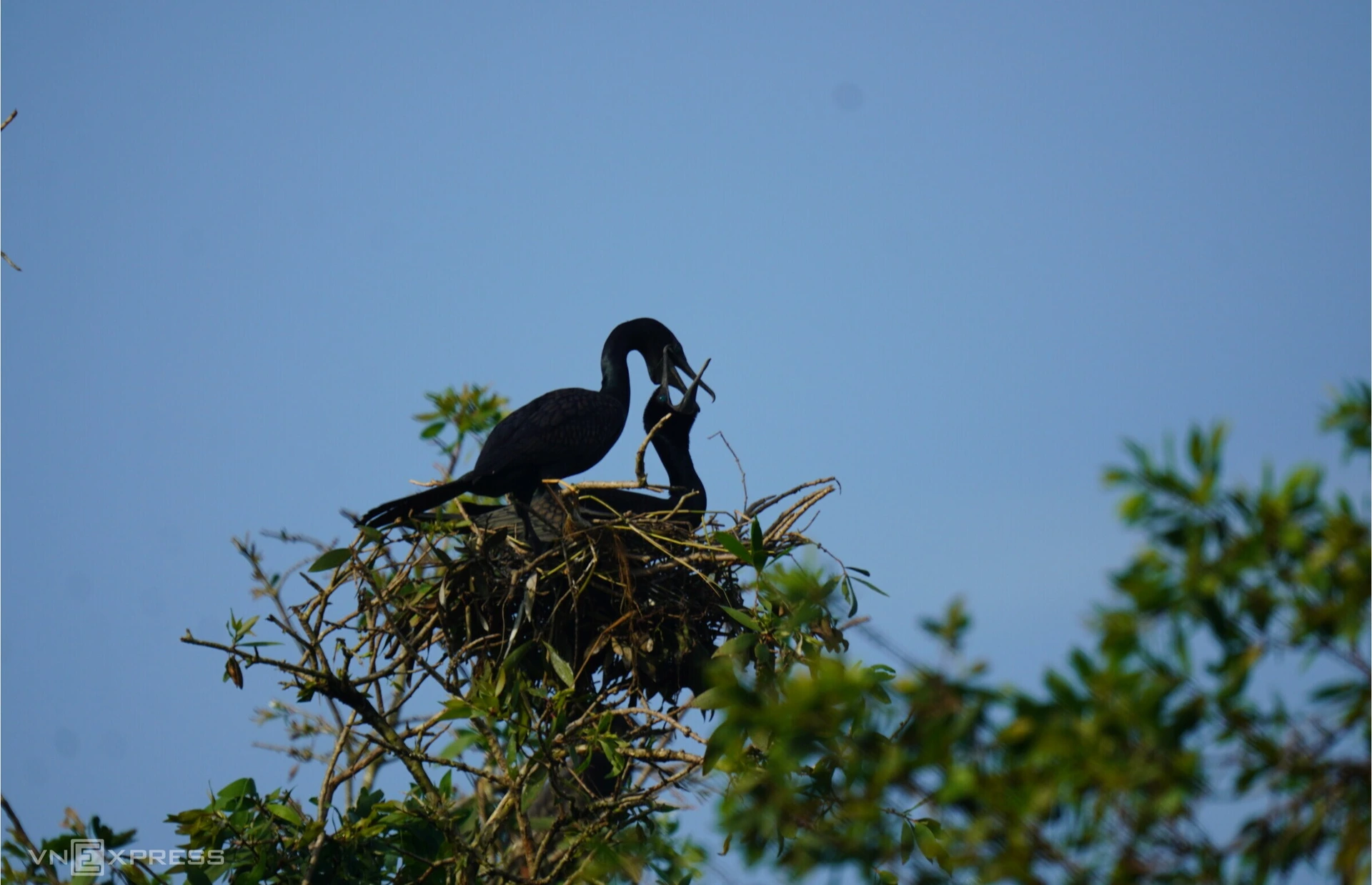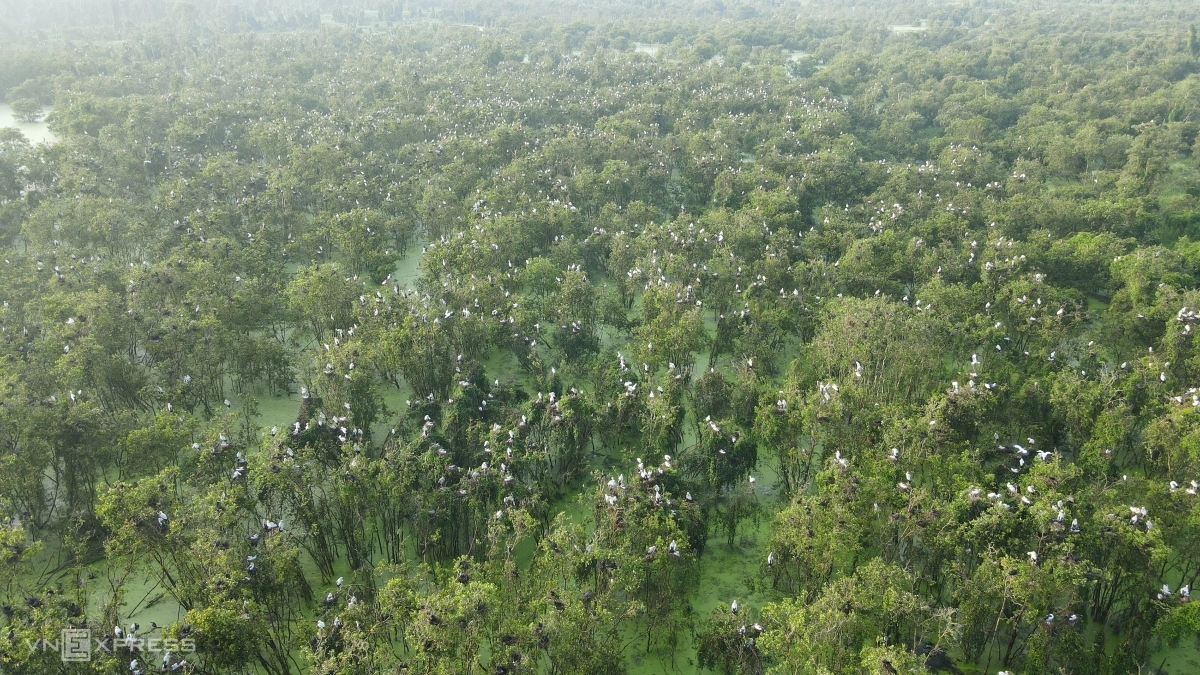
Gao Giong melaleuca forest is 1,500 hectares wide, of which 1,200 hectares is a production melaleuca forest with more than 100 species of birds. In addition to afforestation and exploitation, Gao Giong also combines ecotourism.
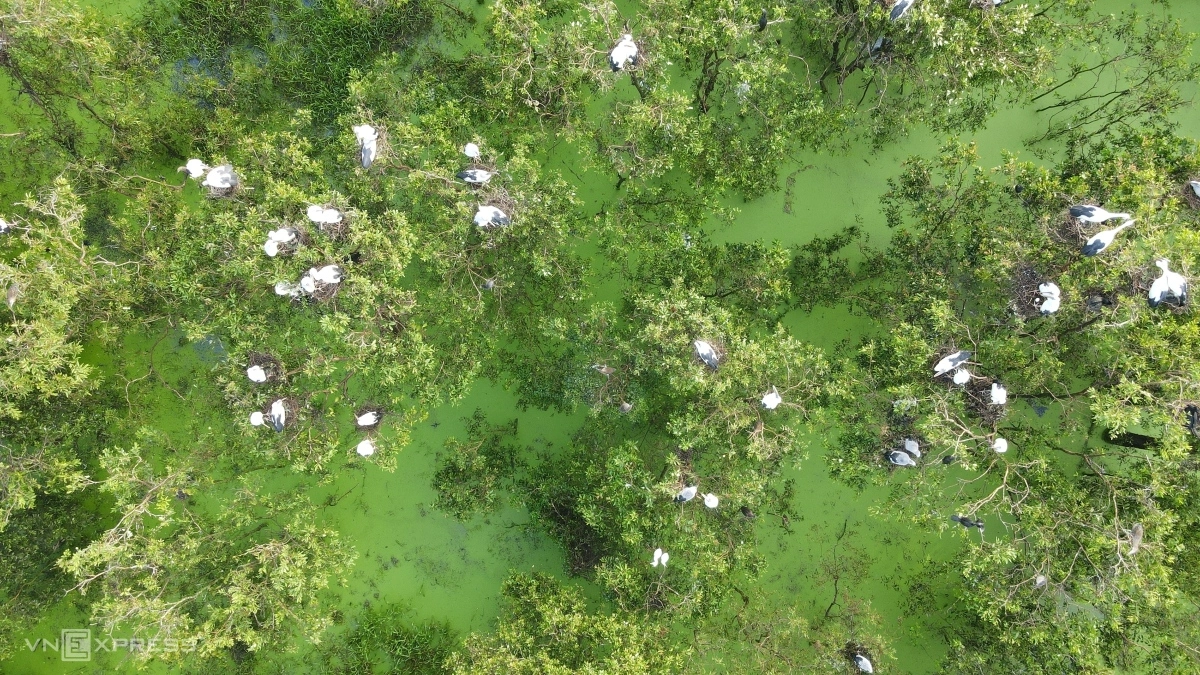
The water season in the West starts around August to November. Water from the upper reaches of the Mekong River flows into Vietnam, rising slowly for many months. The water season is full of lush trees, abundant fish and shrimp, which is the time when many precious birds nest and multiply.
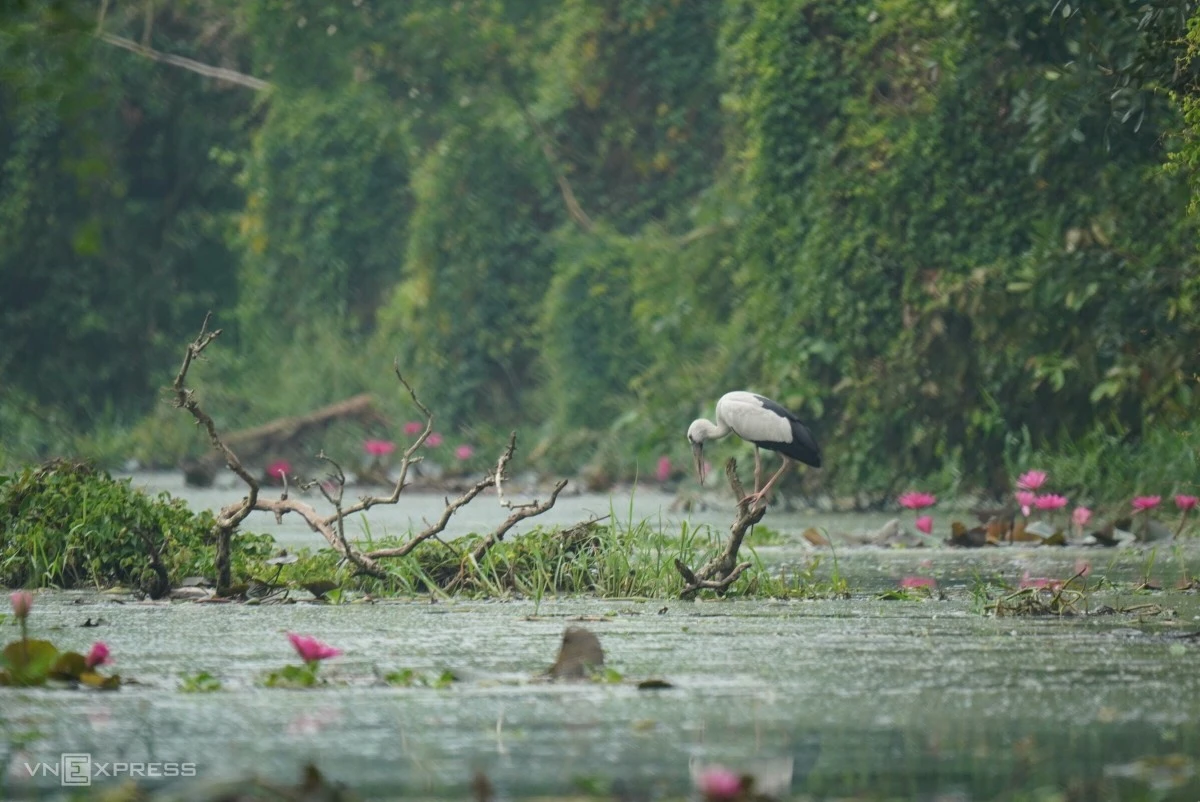
It is estimated that there are tens of thousands of storks - birds in the Red Book, in Gao Giong. In addition to the lotus and gun species, shrimp, fish, crabs, and snails also grow strongly in the swamps, becoming food for birds and storks.
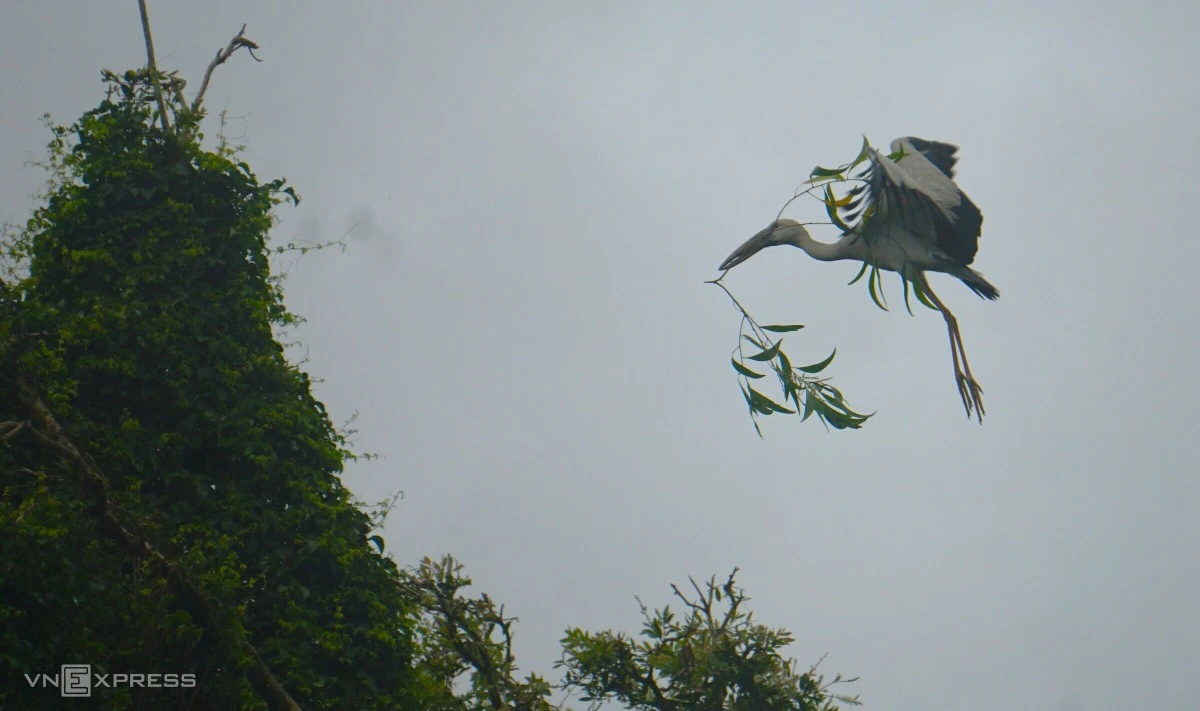
The most common type of stork in Gao Giong is the Snail stork, also known as the Swallow stork. The snail stork's nest is quite large, and the male bird constantly brings back the branches to nest.
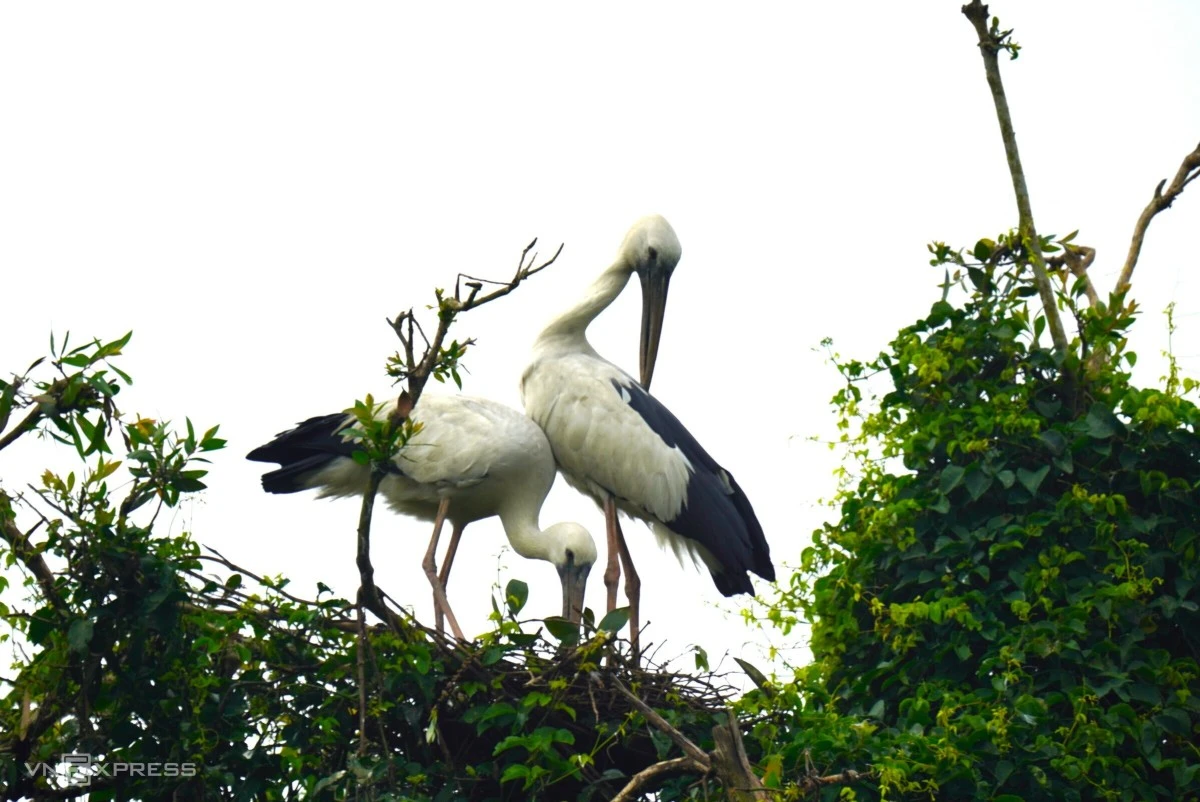
A pair of snail storks on the nest. After finding a satisfactory branch, they will break it and bring it back to the nest and rearrange it firmly.
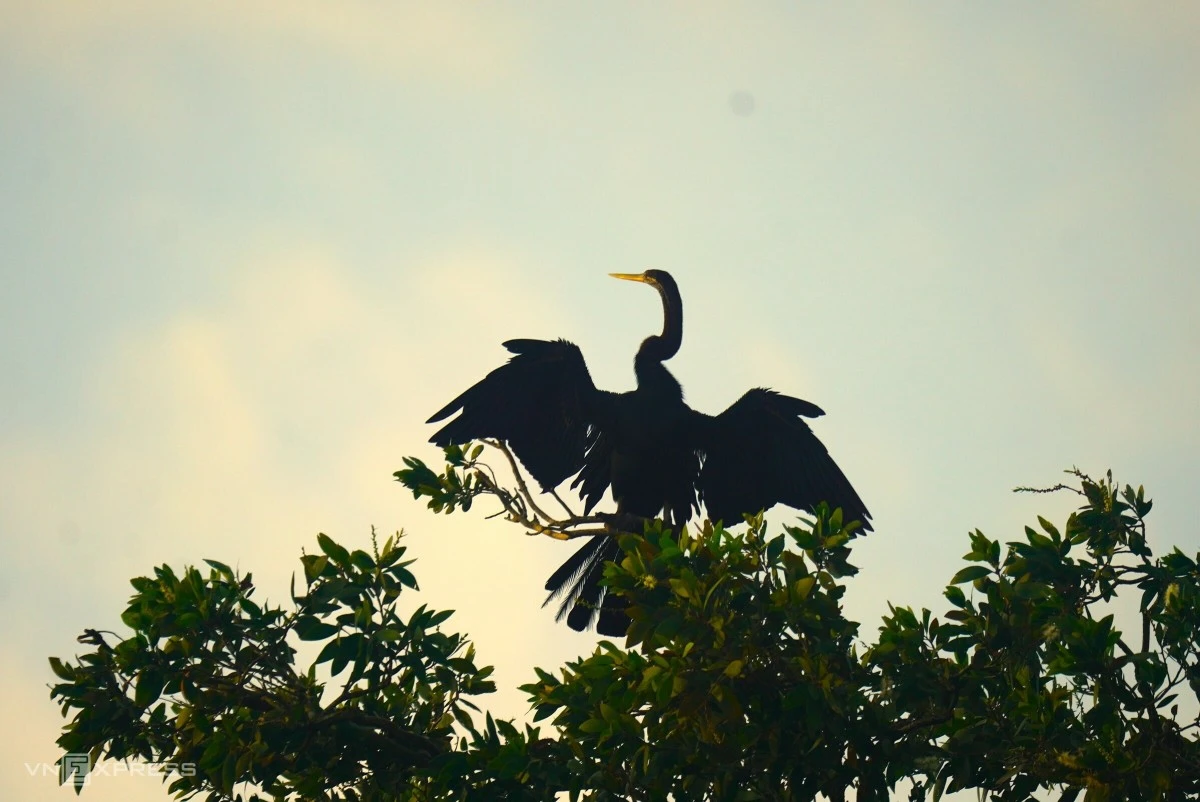
The Dingdiong bird, also known as the Snake Neck bird, chooses a separate area to nest. The whole body of Ding Dien is blue-black, the neck is very long, the beak is long and pointed, and the feet are short with swimming membranes like propellers. They feed on canals, prefer to bask in the sun on trees along the water's banks or melaleuca forests.
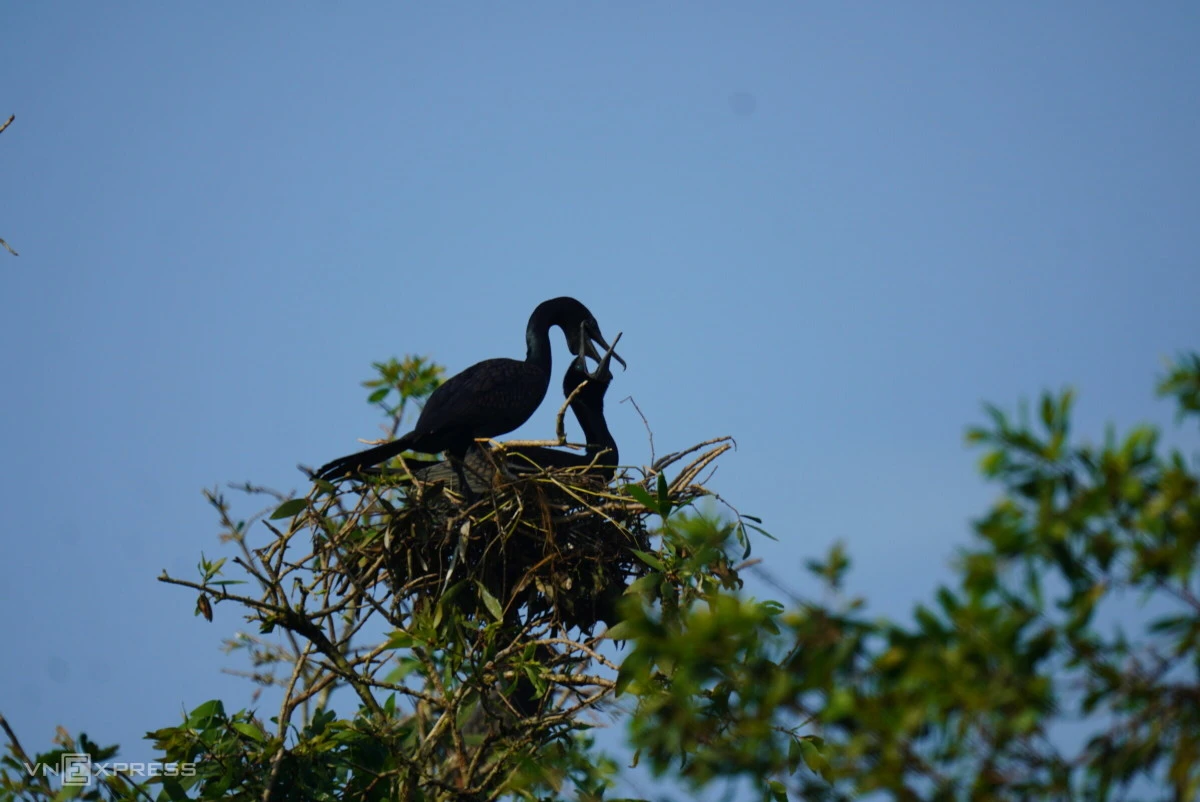
The Shackle Birds play on the nest. When the Pole Neck matures during the breeding period, the feathers on its head will be covered with silver plates. The young are born with white fluff and gradually turn black as they grow.
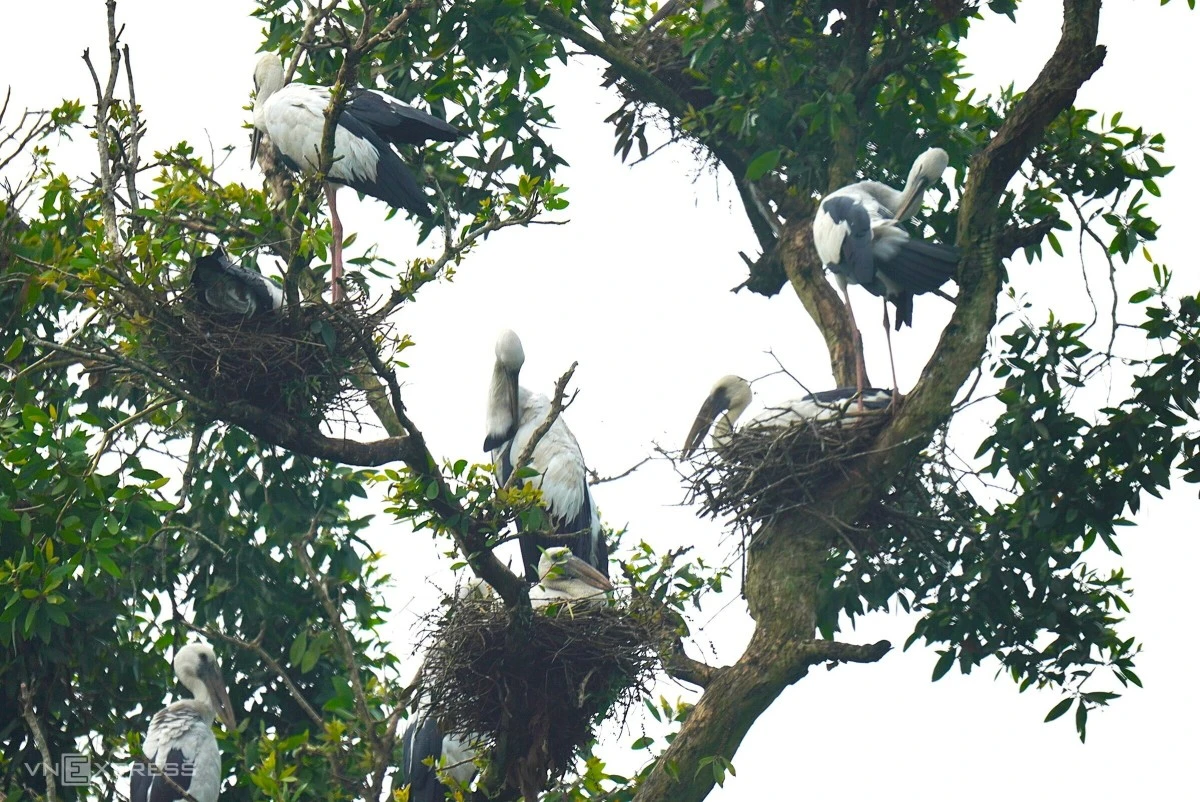
Snails nest close to each other on the top of the melaleuca tree. After the bird breeding season, the melaleuca forest area is often fibrous because birds take branches and leaves to nest. After one to two years, the flock chooses a new area for breeding.
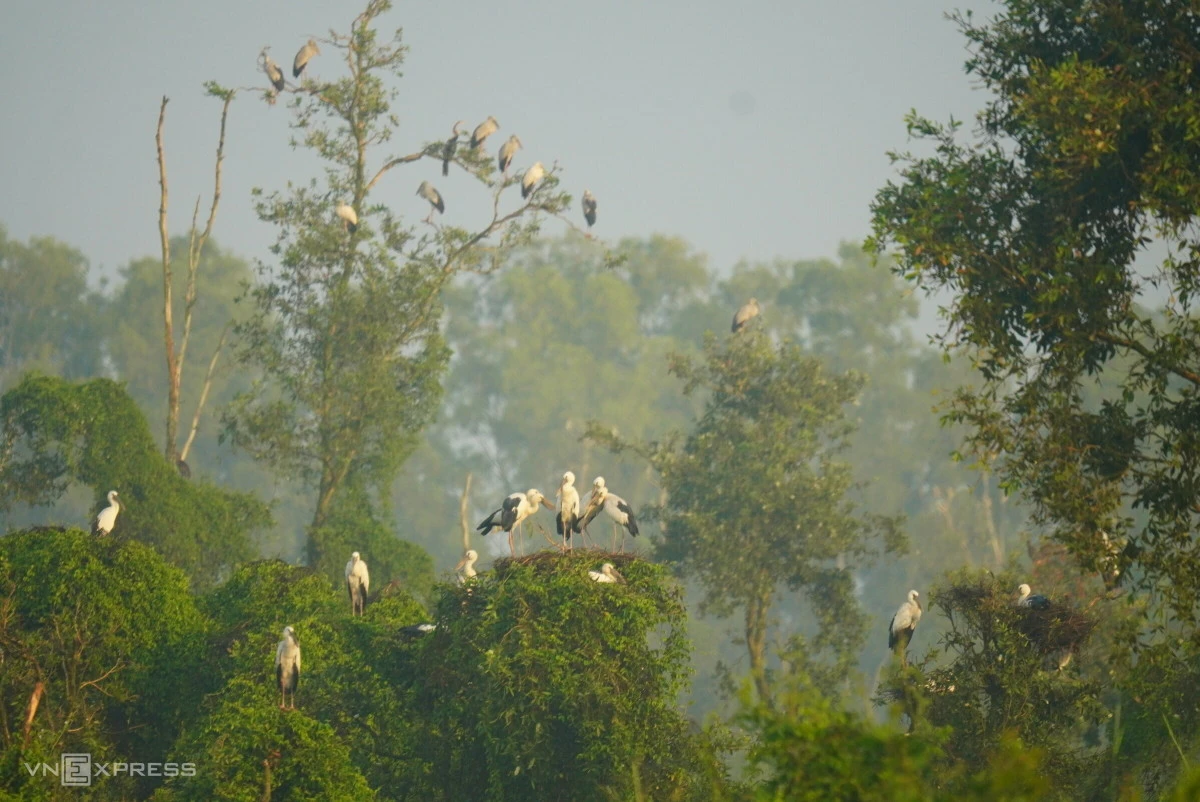
A peaceful scene early in the morning in Gao Giong melaleuca forest.
According to VnE
